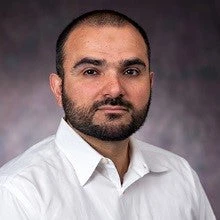 The World Bank’s database
Global Findex estimates that more than 2.5 billion people from around the world lack access to formal financial institutions, with the largest concentrations in
emerging markets and developing economies (EMDEs). This places the poor at a disadvantage, and significantly limits their ability to smooth their expenditures and engage in productive economic activity, particularly at a level and capacity sufficient to lift them out of poverty. It also offers a clue as to why poverty reduction programs in the Middle East and North Africa (MENA) region have such mediocre track records.
The World Bank’s database
Global Findex estimates that more than 2.5 billion people from around the world lack access to formal financial institutions, with the largest concentrations in
emerging markets and developing economies (EMDEs). This places the poor at a disadvantage, and significantly limits their ability to smooth their expenditures and engage in productive economic activity, particularly at a level and capacity sufficient to lift them out of poverty. It also offers a clue as to why poverty reduction programs in the Middle East and North Africa (MENA) region have such mediocre track records.
Although account penetration rates – measured as the percentage of people age 15+ having an account in a formal financial institution – are high in several Gulf countries (Kuwait at 87 percent, Iran and Oman at 74 percent, and Qatar at 66 percent), as of 2011, the MENA region as a whole had an average account penetration rate of 18 percent, the lowest in the world (Figure 1).

(Click to Enlarge)
Without a bank account, or any form of established relationship with a formal financial institution, the poor have little to no access to formal saving, credit, and insurance services. This puts a variety of income generating opportunities out of reach, such as establishing small businesses or embarking on entrepreneurial ventures. To improve the success rate of MENA poverty reduction programs, access to financial services should be moved to center stage. One place to start when formulating new policies would be education.
Global patterns show that women, youth, the less educated, rural residents and those at the bottom of the economic ladder are at a disadvantage compared to other groups (Table 1) when it comes to financial inclusion. However, among these various factors, education seems to make the most difference: 43 percent of those with tertiary education and above have accounts in formal financial institutions, while only 14 percent of those with primary education or less have such accounts.

(Click to Enlarge)
By increasing access to and the quality of education in MENA, the region’s policymakers could address poverty from two different angles. First, more and better education would lead to higher lifetime income, thereby reducing the count and the severity of poverty in the long-run. Second, more education can significantly increase the probability of one’s access to formal financial services, which again is known to have substantial impact on one’s lifetime earnings by supporting entrepreneurial activities and smoothing educational, nutritional, and health expenditures that are vital ingredients of long-run human capital. Without a doubt, increased access to tertiary education would have a more pronounced impact in countries such as Yemen, Iraq, and Egypt that have low gross tertiary school enrollment rates of 10, 16, and 30 percents respectively. With a clear focus on the link between education and financial inclusion, as a path toward access to financial services, regional programs would begin offering the stepping stones needed to exit poverty.


Join the Conversation